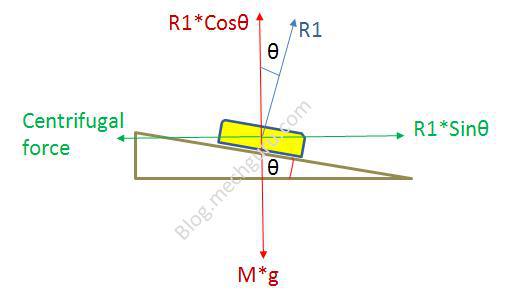Roller Coasters
| Home |
Potential
and Kinetic Energy |
Centripetal
Forces |
Forces on a
Coaster |
Loop Design |
Bibliography |
Centripetal Forces
Newtons Second Law:  Photo top:http://hyperphysics.phy-astr.gsu.edu/hbase/newt.html#nt2cn Photo bottom:http://blog.mechguru.com/heat-treatment/how-to-calculate-banking-angle-of-road/ |
First,
it should be mentioned that there is no such force
called centripetal force, it is just Newton’s second
laws being applied differently, we just call this
scenario as such to help classify the what is
happening. Centripetal force is the feeling of a body
being propelled forward but is halted by an
obstruction, then continues on a path and is pushes
against it. Same thing happens in a car when you make
a turn. You are traveling the same velocity as
the car, but when it turns you are still moving
forward. You are then halted by either the door or
seat belt, which stops you. When this happens you get
the feeling of being pushed against the surface or to
the outer edge of the car. This same concept is
applied to coasters as the coaster enters a loops and
banked turns. In a
loop, designers aim to make the rider feel somewhat
weightless when in the cart, but still have enough
velocity to push the riders against the seat to
prevent the feeling of falling out. You wouldn’t want
to scare all your costumers with the fear of falling
out of their seat during a ride. To do this, they make
it so that the normal force between the coaster and
the track is equal. This gives the feeling of
weightlessness as your body is flying upwards and
gravity tries to pull you down but nothing happens as
the forces are equal. They make it so that there is
enough force on you to be pushed against the seat to
prevent a complete feeling of falling, but still
weightless. This is also used on the tops of hills to
give the same feeling. Another
use
of this is on banked turns. Banked turns use this idea
to allow the coaster to turn gently without creating
the feeling of being flung out due to the high
speeds. This can be seen on roads where ice and rain
are frequent. As a car reaches a sharp turn, ice and
water will cause cars to slide off the road due to the
lack of friction and the car wanting to continue
forward. By banking the road slightly, the car will
press against the road from centripetal forces rather
than against nothing, which would lead to sliding off
the road. Banked turns create less stress for the
rider and the coaster as it is easier to turn than on
a horizontal turn. |